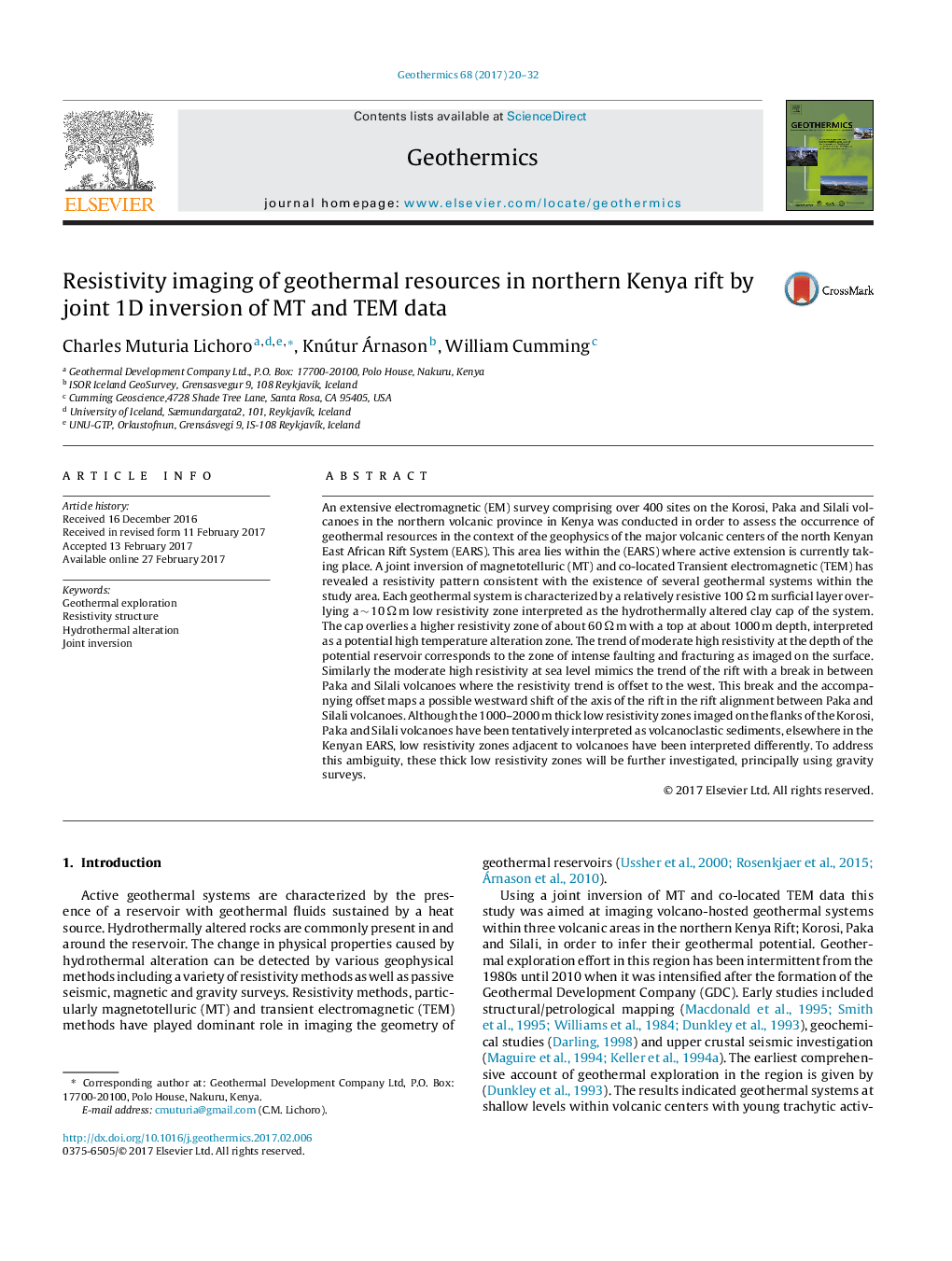| کد مقاله | کد نشریه | سال انتشار | مقاله انگلیسی | نسخه تمام متن |
|---|---|---|---|---|
| 5478700 | 1521901 | 2017 | 13 صفحه PDF | دانلود رایگان |

- Interpretation of MT and TEM data from volcanic setting within East African Rift valley.
- Application of Joint 1-D inversion of MT and TEM data to interprete resistivity structure.
- Implications of trachyte on the conductivity of the resistivity cap overlying a geothermal reservoir.
- Reveals that the rift axis at Silali volcano has recently moved eastwards to align with the Paka volcanic axis.
An extensive electromagnetic (EM) survey comprising over 400 sites on the Korosi, Paka and Silali volcanoes in the northern volcanic province in Kenya was conducted in order to assess the occurrence of geothermal resources in the context of the geophysics of the major volcanic centers of the north Kenyan East African Rift System (EARS). This area lies within the (EARS) where active extension is currently taking place. A joint inversion of magnetotelluric (MT) and co-located Transient electromagnetic (TEM) has revealed a resistivity pattern consistent with the existence of several geothermal systems within the study area. Each geothermal system is characterized by a relatively resistive 100 Ω m surficial layer overlying a â¼Â 10 Ω m low resistivity zone interpreted as the hydrothermally altered clay cap of the system. The cap overlies a higher resistivity zone of about 60 Ω m with a top at about 1000 m depth, interpreted as a potential high temperature alteration zone. The trend of moderate high resistivity at the depth of the potential reservoir corresponds to the zone of intense faulting and fracturing as imaged on the surface. Similarly the moderate high resistivity at sea level mimics the trend of the rift with a break in between Paka and Silali volcanoes where the resistivity trend is offset to the west. This break and the accompanying offset maps a possible westward shift of the axis of the rift in the rift alignment between Paka and Silali volcanoes. Although the 1000-2000 m thick low resistivity zones imaged on the flanks of the Korosi, Paka and Silali volcanoes have been tentatively interpreted as volcanoclastic sediments, elsewhere in the Kenyan EARS, low resistivity zones adjacent to volcanoes have been interpreted differently. To address this ambiguity, these thick low resistivity zones will be further investigated, principally using gravity surveys.
Journal: Geothermics - Volume 68, July 2017, Pages 20-32